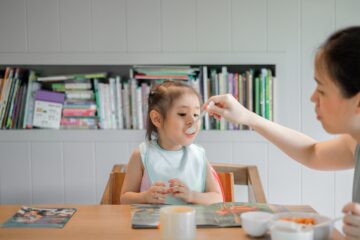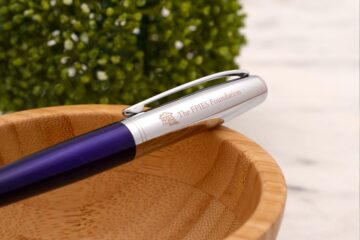Recently, we learned about an award winning Science Fair project that raised awareness to food allergies. It was done by a 6th grade student and today we’d like to share a little about that project with you!
Tell us a little about yourself. I am Ameya Balaji, studying in 6th grade, and I like drawing/crafting, reading, playing the piano, and building LEGOs.
What inspired your science project? I recently heard about the possibility of an allergic reaction due to cross-contact, and this became an inspiration for me to learn more about it.
Can you tell us a little about your project? My project used allergen test sticks to answer my question, “What is the safest way to prevent cross-contact?” I used different cleaning methods to see which one was the most effective. The title Frenemy: Ig relates to how your immune system can be a friend and an enemy if you have food allergies. It helps keep you safe, but life-threatening symptoms may occur when it produces Ig, which defends against invaders during an allergic reaction.
What is cross-contact? Cross-contact happens when an allergen is transferred between foods accidentally.
What did you try to show? I tried to represent cross-contact at a restaurant or home baking environment. In my experiment, it was as if I made cookie dough and then bread dough on the same baking mat.
Describe your method, the components of the experiment, and how you went about your experiment. The main component used in the experiment is an allergen test kit.
Additional materials used: egg/flour, a silicone mold with six cavities, six plastic sticks/knives labeled 1-6, a digital pocket scale/timer, two ½ teaspoon measures, six pairs of gloves, a 5 ml syringe, bowls, water, paper towel, and dishwashing soap.
First, make a dough with the egg and flour. Add it to cavities 2-6 in the mold. Add plain flour to cavity 1. For cavities 3-6, leave 3 uncleaned, clean 4 with a dry paper towel, clean 5 with a wet paper towel, and clean 6 with a soapy solution. Measure ½ teaspoon of flour into cavities 3-6 and mix well. Extract 0.5-gram samples from the cavities and use the allergen detection kit for instructions on inserting the stick.
My experiment was qualitative, so either my stick found the allergen or did not. I held four trials, and using the mode, I determined that washing with soap and water was the safest way to prevent cross-contact. As an add-on, I also tested two food products; one said it may contain egg, and the other said it was free from egg. They both tested negative, but if a food “may contain” an allergen, it doesn’t guarantee the absence of an allergen, illustrating the risk of cross-contact.
How did you report/present what you learned? I reported my learnings mainly through my board and logbook, which had graphs, charts, narratives, and illustrations/photos. I also presented the project at the awards assembly.
What did you learn by doing this project? This project opened my eyes to the severity of food allergies and the importance of awareness. I also learned many scientific concepts throughout the process.
What did you learn from the science that you didn’t know? I took a deep dive into the world of food allergies, and I discovered a lot about the immune system, food allergies/allergic reactions, cross-contact, allergen test kits, food labeling requirements, and more!
What did you learn about what other people knew about cross-contact? I learned that many people mistake cross-contact with cross-contamination. They’re different: cross-contact refers to allergens that are transferred, which won’t break down when cooking; on the other hand, cross-contamination refers to germs that make food unsafe—sometimes, cooking can reduce the risk.
What else did you learn/take away from this project and presenting at the science fair? The takeaway from this project was that I could make a change in the world! When people look at my project, I hope they act to create a safer environment for people with food allergies.
What award did you receive? I received 2nd place in the grades 6-8 category at my school!

Ameya was also featured in this post by Emport, LLC highlighting her award winning project!
“Award-Winning Science Fair with AlerTox Sticks Egg, Frenemy: Ig“.
This post was written by Joy Meyer, Co-Director/Co-Founder of The FPIES Foundation as an interview with the Parent/Family of Ameya Balaji.


